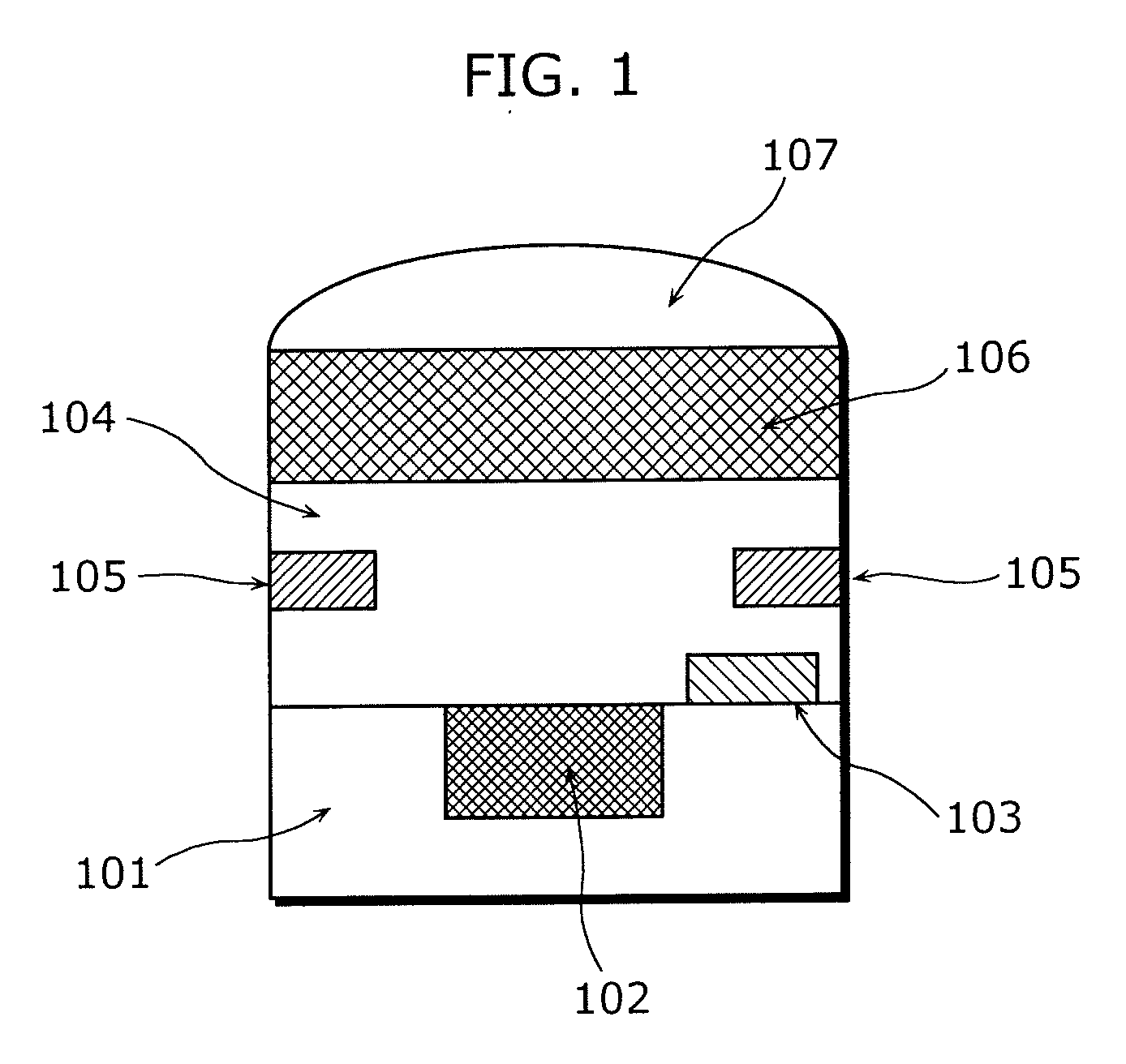Solid-state imaging device and manufacturing method thereof
a solid-state imaging and manufacturing method technology, applied in the direction of solid-state devices, color television, television systems, etc., can solve the problems of reducing the light collection efficiency to 50% or below, the impracticality of solid-state imaging devices, and the more practicability of the first-type conventional technique, etc., to achieve excellent color separation characteristics, eliminate loss, and highlight collection efficiency
- Summary
- Abstract
- Description
- Claims
- Application Information
AI Technical Summary
Benefits of technology
Problems solved by technology
Method used
Image
Examples
first embodiment
[0056]A solid-state imaging device in a first embodiment of the present invention and a manufacturing method thereof shall be described with reference to FIGS. 4A through 10.
[0057]FIG. 4A illustrates cross-sectional views of three pixel units in red, green, and blue in the solid-state imaging device of the embodiment. FIG. 4A shows that a photodiode 102, a read-out circuit 103 reading out an output signal from the photodiode 102, and metal lines 105 and 105′ are formed in each of pixel units on a surface of an Si substrate 101. The metal lines 105 and 105′ are provided in an interlayer insulating film 104 chiefly made of SiO2. Each of the pixel units is 1.5 μm in size. In a portion of the interlayer insulating film 104 on each of photodiodes 104, an optical waveguide 401, an optical waveguide 402, and an optical waveguide 403 are formed. The optical waveguide 401 transmits a red wavelength region light, and absorbs the lights of the other wavelength regions. The optical waveguide 40...
second embodiment
[0071]A solid-state imaging device in a second embodiment of the present invention and a manufacturing method thereof shall be described with reference to FIG. 11 through FIG. 16.
[0072]FIG. 11 illustrates cross-sectional views of three pixel units in red, green, and blue in the solid-state imaging device of the embodiment. FIG. 11 shows that the photodiode 102, an output signal read-out circuit 103 thereof, and metal lines 105 and 105′ are formed in each of pixel units on a surface of an Si substrate 101. The metal lines 105 and 105′ are provided in an interlayer insulating film 104 chiefly made of SiO2. Each of the pixels is 1.5 μm in size. In a portion of the interlayer insulating film 104 on each of photodiodes 102, an optical waveguide 1101, an optical waveguide 1102, and an optical waveguide 1103 are formed. The optical waveguide 1101 transmits a red wavelength region light and absorbs the lights of the other wavelength regions. The optical waveguide 1102 transmits a green wave...
third embodiment
[0084]A solid-state imaging device in a third embodiment of the present invention and a manufacturing method thereof shall be described with reference to FIGS. 17 through FIG. 23.
[0085]FIG. 17 illustrates cross-sectional views of three pixel units in red, green, and blue in the solid-state imaging device of the embodiment. FIG. 17 shows that the photodiode 102, the output signal read-out circuit 103 thereof, and the metal lines 105 and 105′ are formed in each of pixel units on a surface of the Si substrate 101. The metal lines 105 and 105′ are provided in the interlayer insulating film 104 chiefly made of SiO2. Each of the pixels is 1.5 μm in size. In a portion of the interlayer insulating film 104 on each of photodiodes 102, an optical waveguide 1701, an optical waveguide 1702, and an optical waveguide 1703 are formed. The optical waveguide 1701 transmits a red wavelength region light and absorbs the lights of the other wavelength regions. The optical waveguide 1702 transmits a gre...
PUM
 Login to View More
Login to View More Abstract
Description
Claims
Application Information
 Login to View More
Login to View More - R&D
- Intellectual Property
- Life Sciences
- Materials
- Tech Scout
- Unparalleled Data Quality
- Higher Quality Content
- 60% Fewer Hallucinations
Browse by: Latest US Patents, China's latest patents, Technical Efficacy Thesaurus, Application Domain, Technology Topic, Popular Technical Reports.
© 2025 PatSnap. All rights reserved.Legal|Privacy policy|Modern Slavery Act Transparency Statement|Sitemap|About US| Contact US: help@patsnap.com



